The document provides an overview of multithreading in Java, including its definition as a method allowing concurrent execution of multiple threads within a program. It covers the thread lifecycle, methods for creating threads (by extending the Thread class or implementing Runnable), and thread synchronization for managing access to shared resources. Additionally, the concept of thread priorities and the importance of efficient multithreading for optimizing CPU usage are discussed.

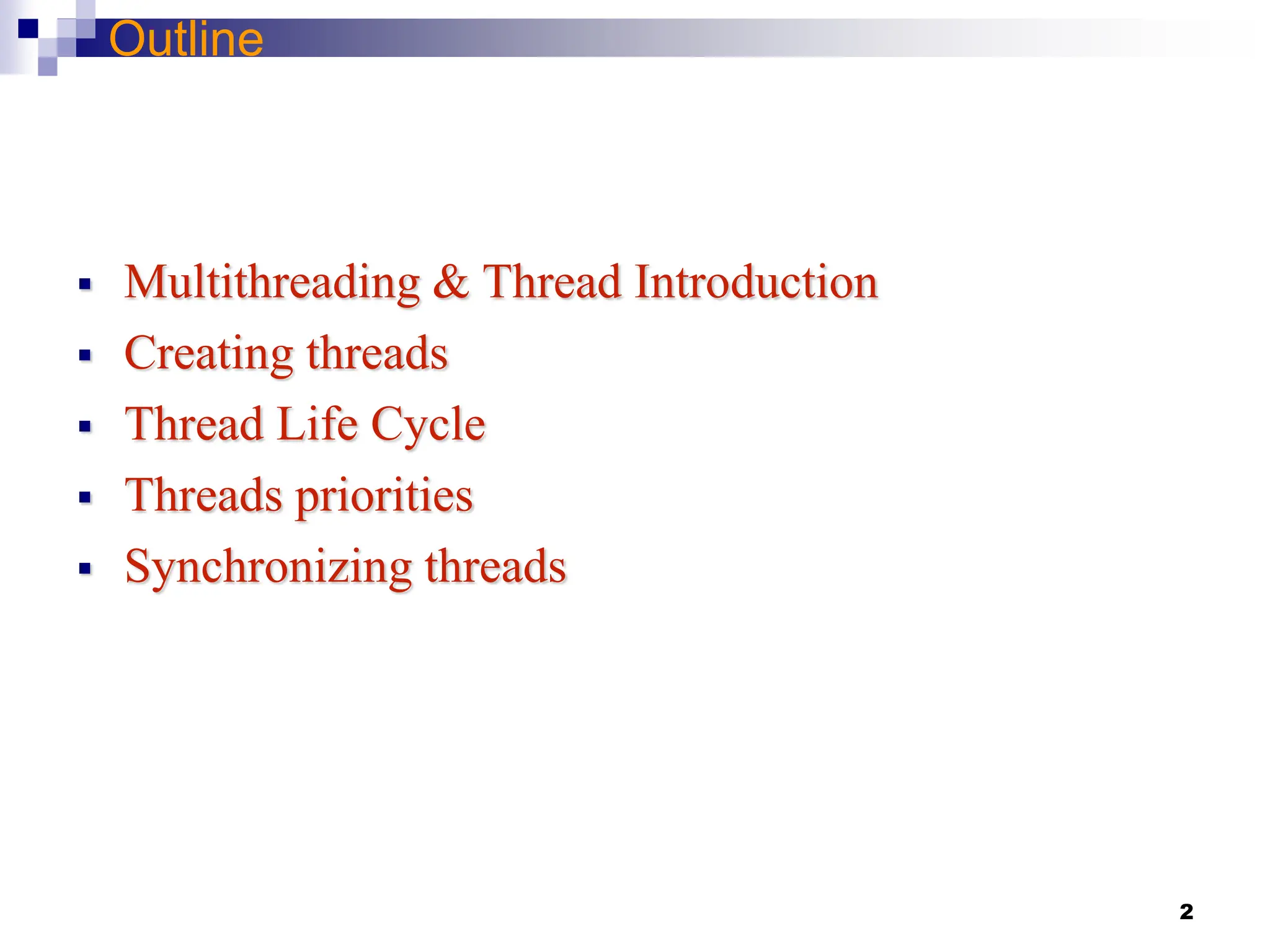
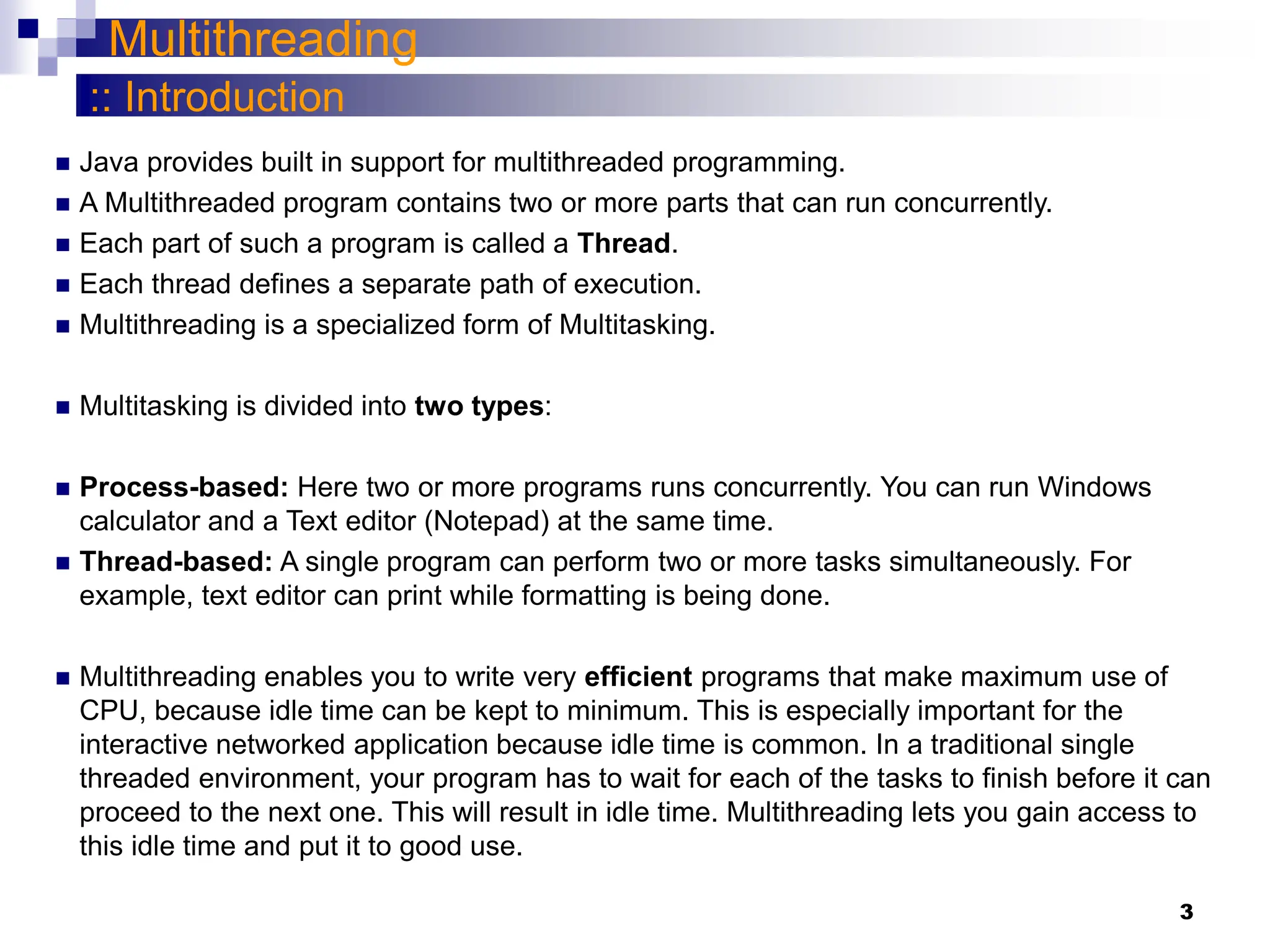




![8
Creating Threads
:: Extending the thread class : example
class MyThread extends Thread { // the thread
public void run() {
System.out.println(" this thread is running ... ");
}
} // end class MyThread
class ThreadEx1 { // a program that utilizes the thread
public static void main(String [] args ) {
MyThread t = new MyThread();
// due to extending the Thread class (above)
// I can call start(), and this will call
// run(). start() is a method in class Thread.
t.start();
} // end main()
} // end class ThreadEx1](https://image.slidesharecdn.com/multithreadinginjava-240520090918-ee452f3a/75/multithreading-creating-a-thread-and-life-cycle-in-java-ppt-8-2048.jpg)
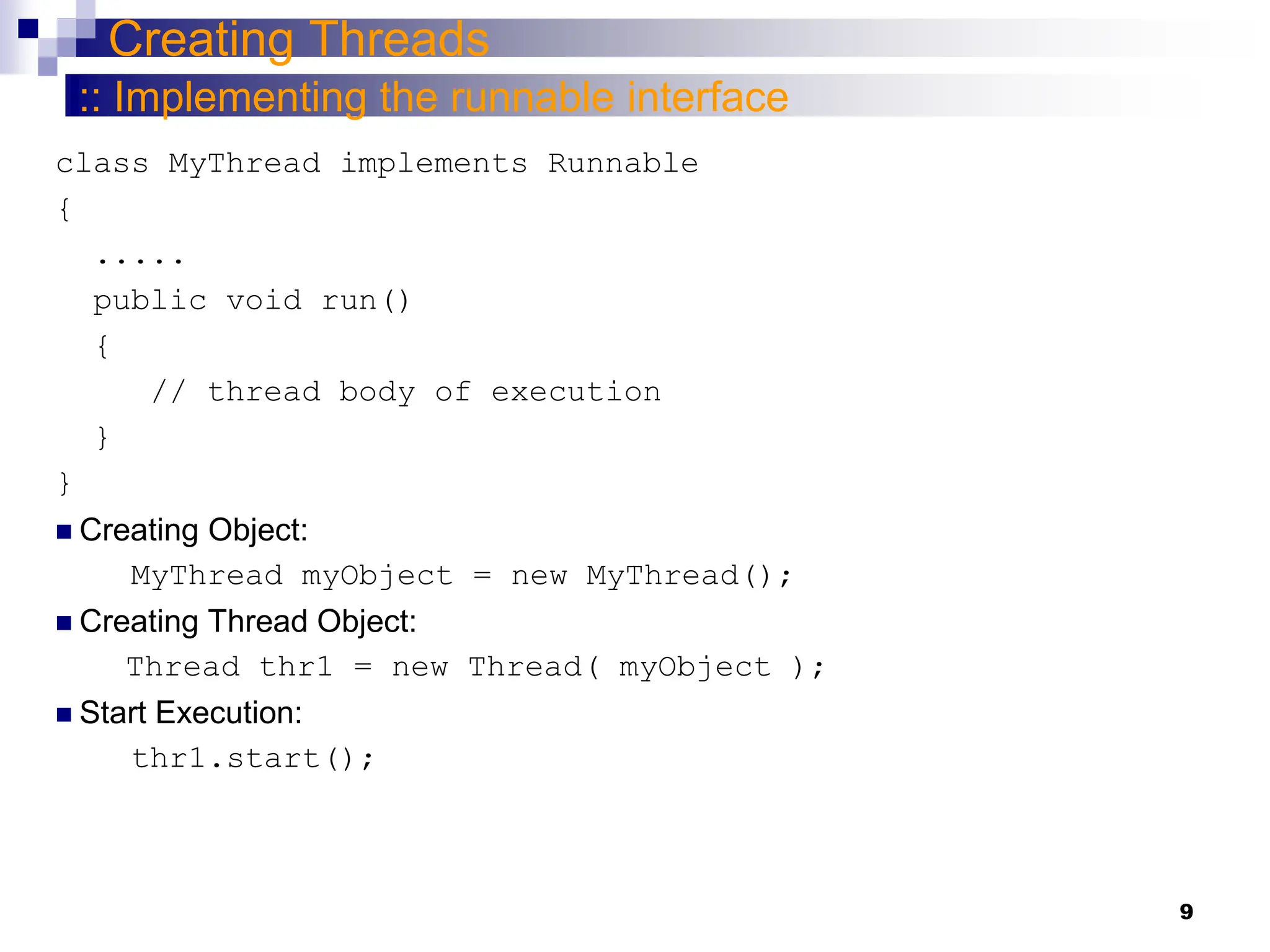
![10
Creating Threads
:: Implementing the runnable interface : example
class MyThread implements Runnable {
public void run() {
System.out.println(" this thread is running ... ");
}
} // end class MyThread
class ThreadEx2 {
public static void main(String [] args ) {
Thread t = new Thread(new MyThread());
// due to implementing the Runnable interface
// I can call start(), and this will call run().
t.start();
} // end main()
} // end class ThreadEx2](https://image.slidesharecdn.com/multithreadinginjava-240520090918-ee452f3a/75/multithreading-creating-a-thread-and-life-cycle-in-java-ppt-10-2048.jpg)
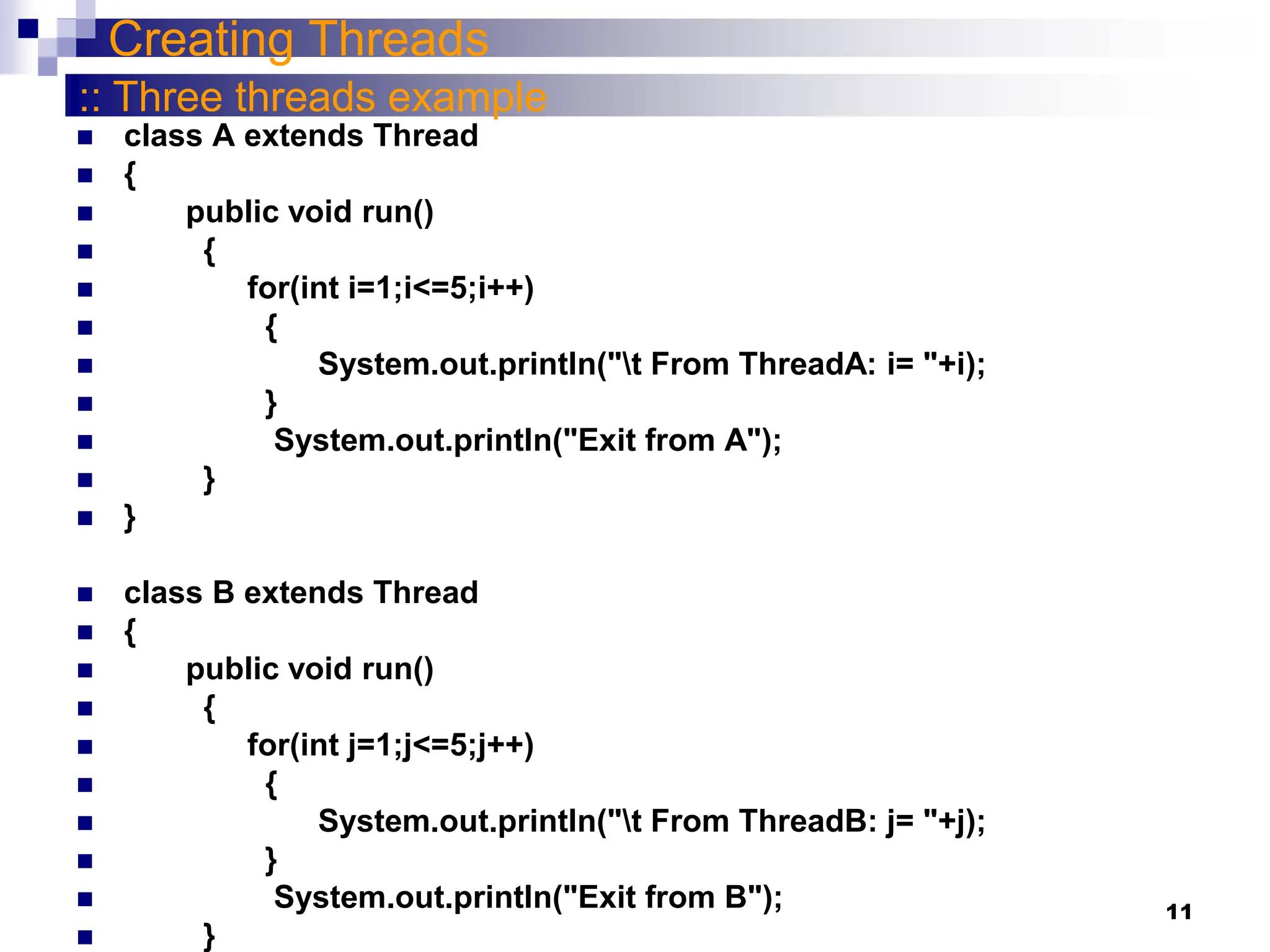
![12
class C extends Thread
{
public void run()
{
for(int k=1;k<=5;k++)
{
System.out.println("t From ThreadC: k= "+k);
}
System.out.println("Exit from C");
}
}
class ThreadTest
{
public static void main(String args[])
{
new A().start();
new B().start();
new C().start();
}
}
Creating Threads
:: Three threads example](https://image.slidesharecdn.com/multithreadinginjava-240520090918-ee452f3a/75/multithreading-creating-a-thread-and-life-cycle-in-java-ppt-12-2048.jpg)


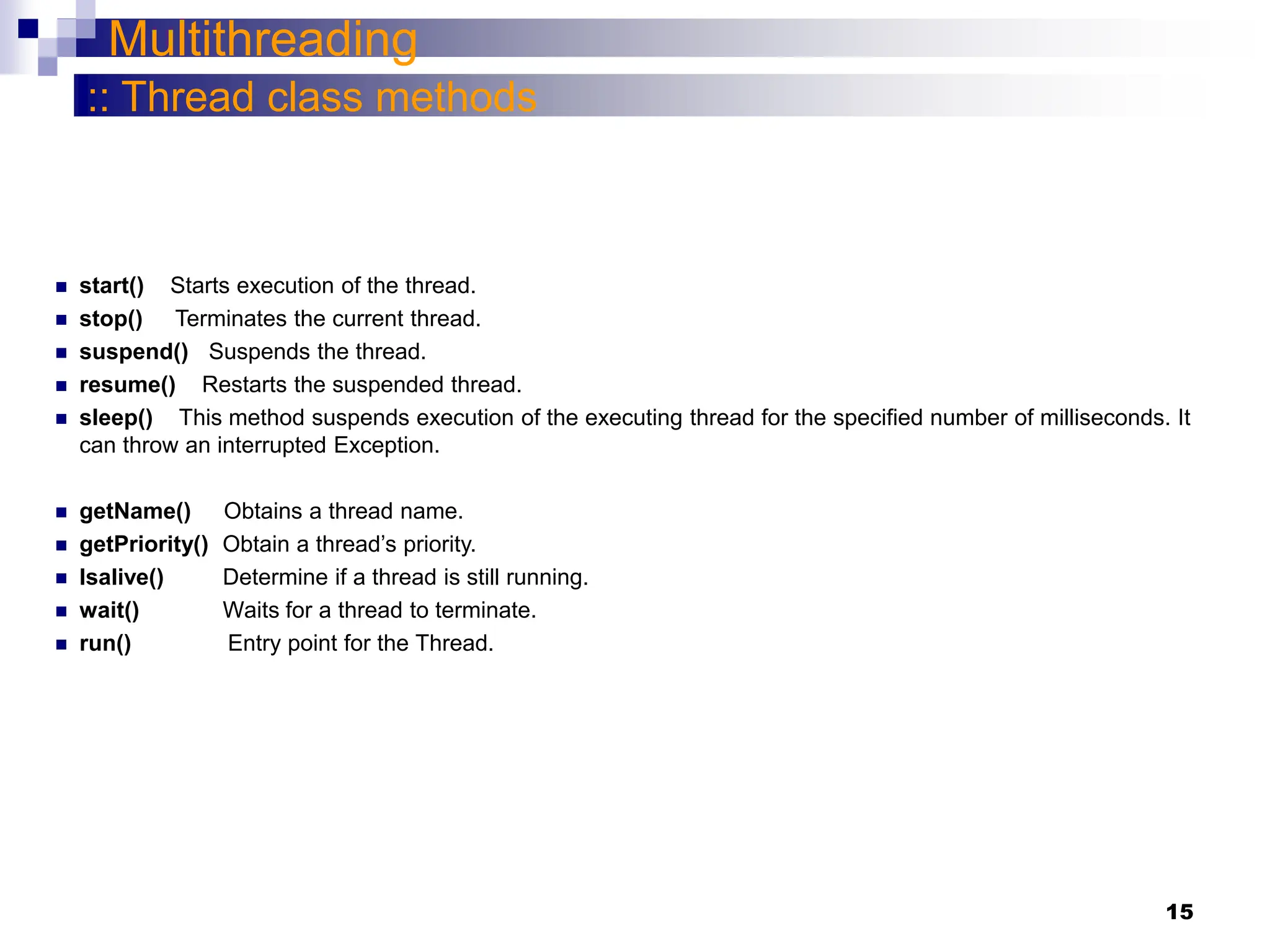
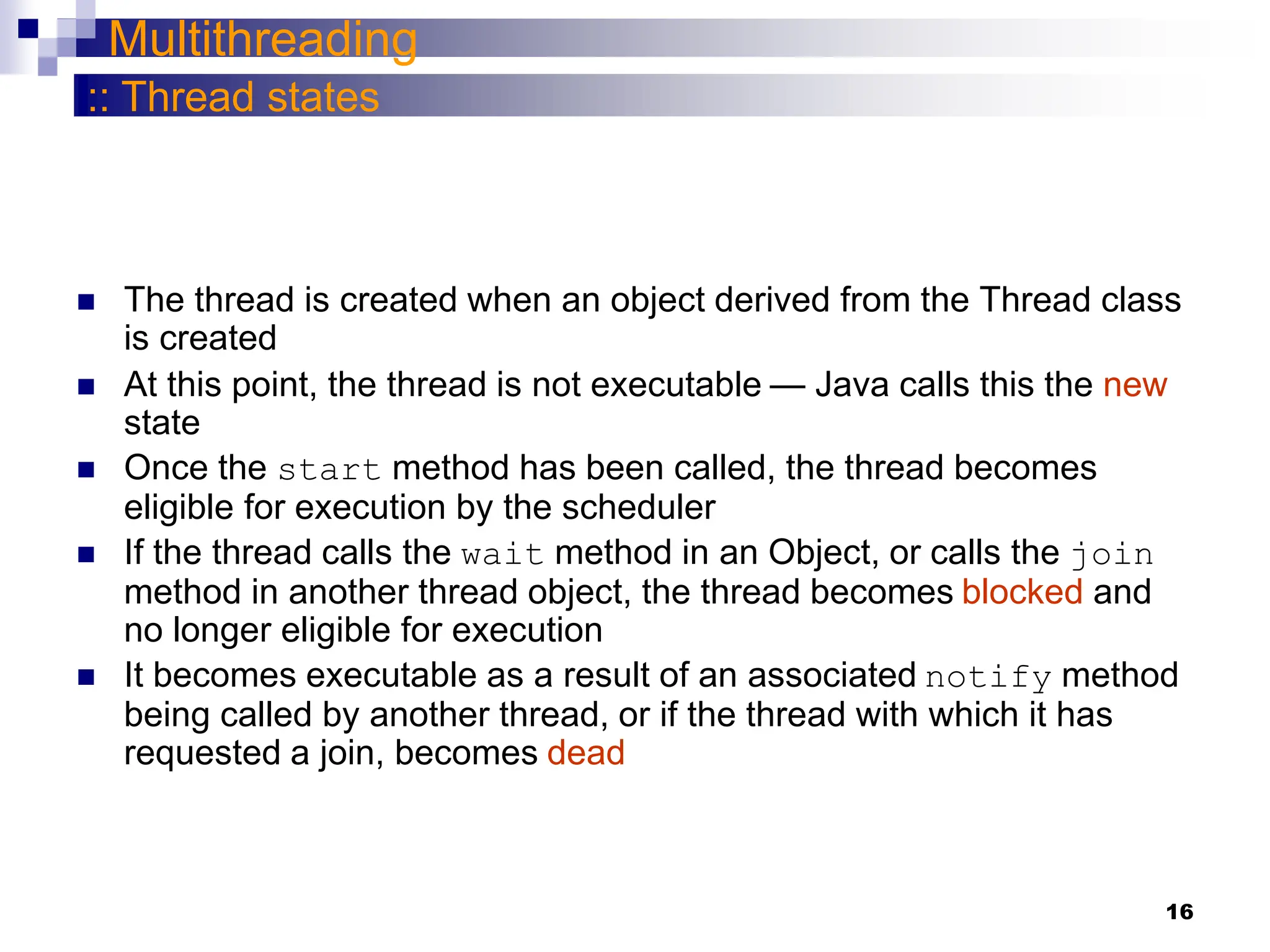


![19
class C extends Thread
{
public void run()
{
for(int k=1;k<=5;k++)
{
System.out.println("t From ThreadC: k= "+k);
if(k==2)
try
{
sleep(1000);
}
catch(Exception e)
{ }
}
System.out.println("Exit from C");
}
}
class ThreadMethod
{
public static void main(String args[])
{
new A().start();
new B().start();
new C().start();
}
}](https://image.slidesharecdn.com/multithreadinginjava-240520090918-ee452f3a/75/multithreading-creating-a-thread-and-life-cycle-in-java-ppt-19-2048.jpg)

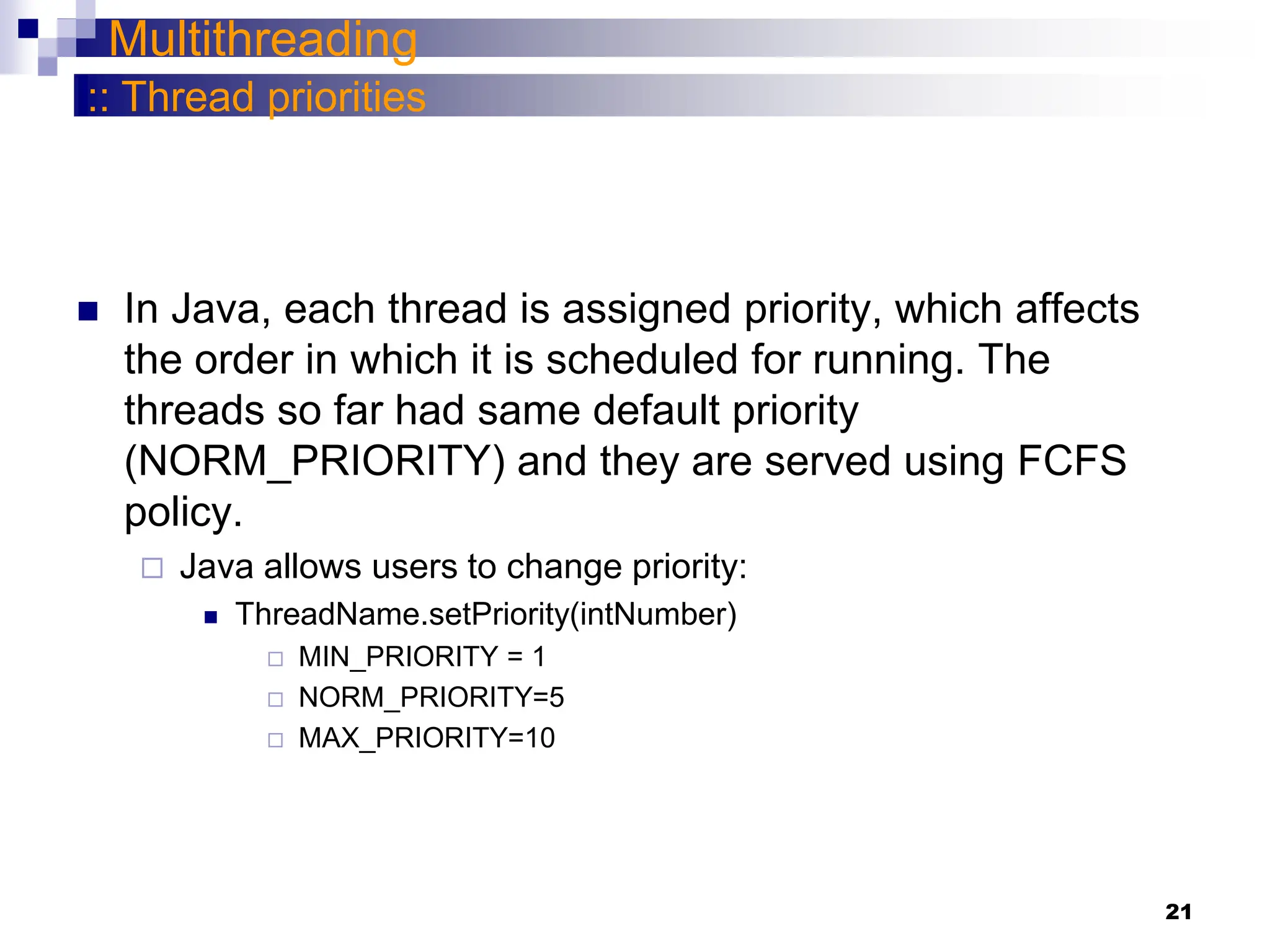

![23
class C extends Thread
{
public void run()
{
System.out.println("Thread C started");
for(int k=1;k<=4;k++)
{
System.out.println("t From ThreadC: k= "+k);
}
System.out.println("Exit from C");
}
}
class ThreadPriority
{
public static void main(String args[])
{
A threadA=new A();
B threadB=new B();
C threadC=new C();
threadC.setPriority(Thread.MAX_PRIORITY);
threadB.setPriority(threadA.getPriority()+1);
threadA.setPriority(Thread.MIN_PRIORITY);
System.out.println("Started Thread A");
threadA.start();
System.out.println("Started Thread B");
threadB.start();
System.out.println("Started Thread C");
threadC.start();
System.out.println("End of main thread");
}
}
Multithreading
:: Thread priorities](https://image.slidesharecdn.com/multithreadinginjava-240520090918-ee452f3a/75/multithreading-creating-a-thread-and-life-cycle-in-java-ppt-23-2048.jpg)
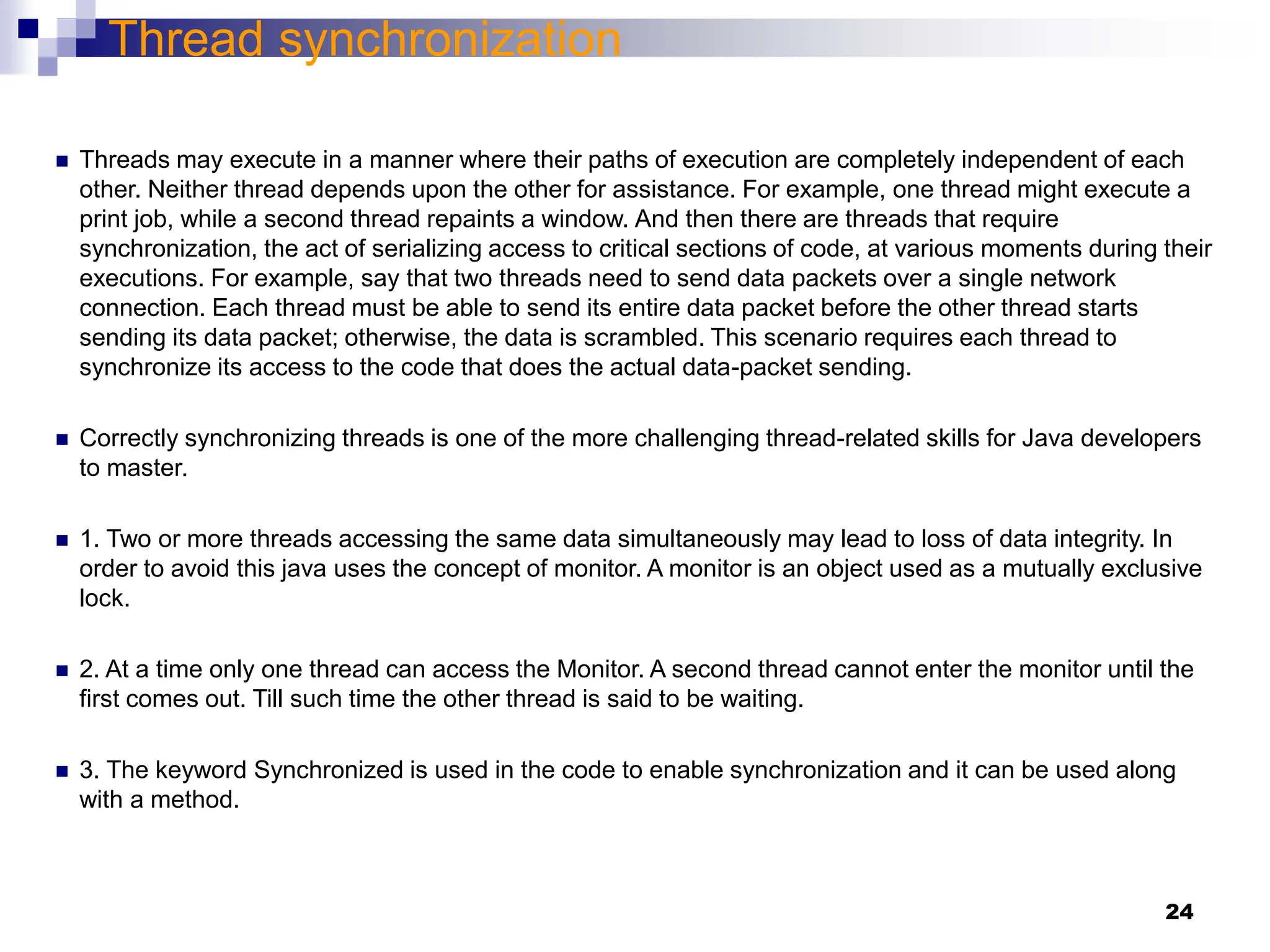
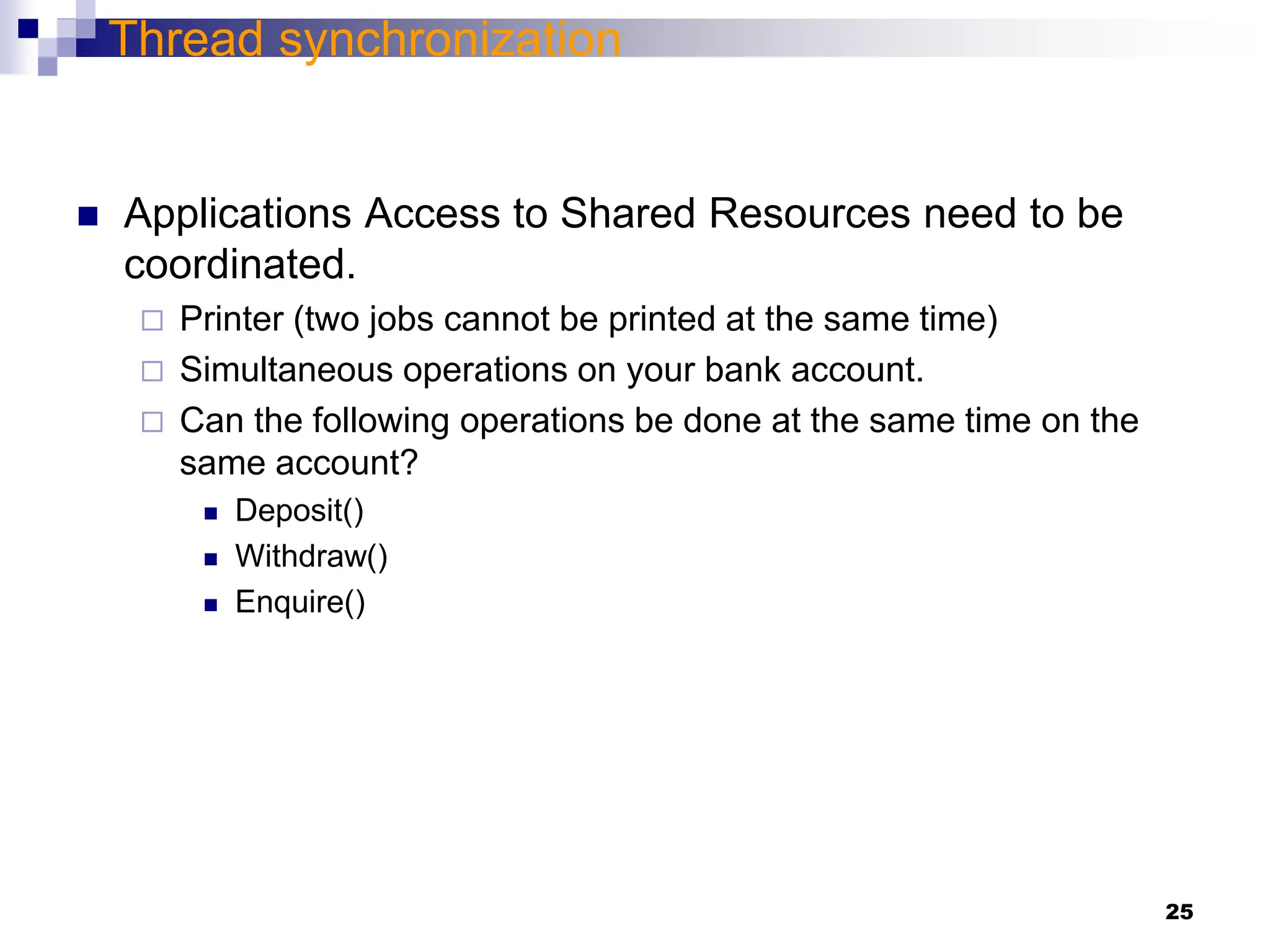
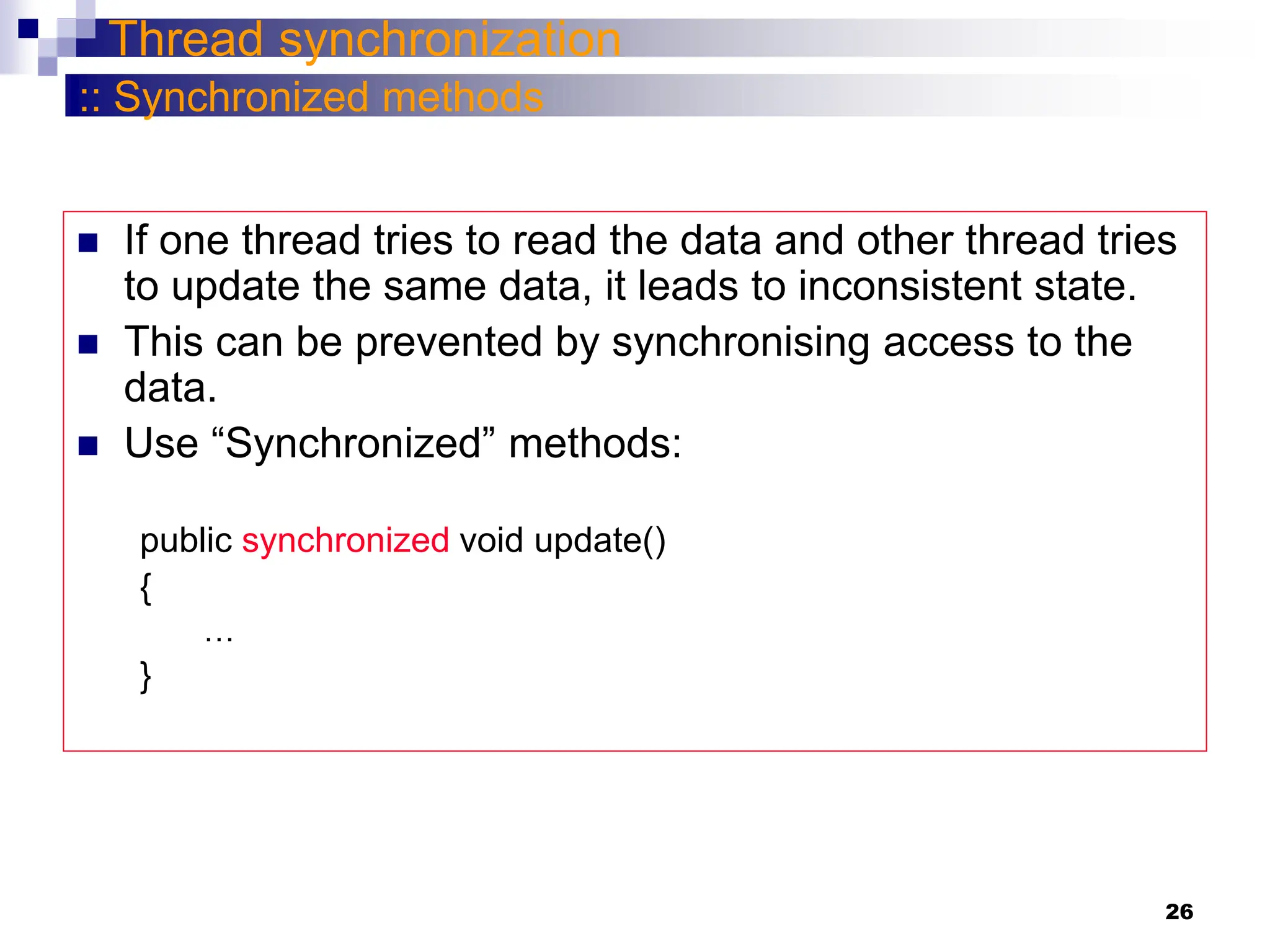
![27
[1] http://today.java.net/pub/a/today/2004/08/02/sync1.html
[2] http://www.learnxpress.com/modules/contents/channels/prog,java,,multithreading.aspx
[3] http://java.sun.com/developer/TechTips/1998/tt0915.html#tip1
[4] http://java.sun.com/docs/books/tutorial/essential/threads/index.html
[5] http://www.sunncity.com/Tutorial_Java/partTwo/multithread.html#briefrecap
[6] http://www.javaworld.com/javaworld/jw-04-1996/jw-04-threads_p.html
[7] http://www.janeg.ca/scjp/threads/synchronized.html
Multithreading
:: References
THANKS](https://image.slidesharecdn.com/multithreadinginjava-240520090918-ee452f3a/75/multithreading-creating-a-thread-and-life-cycle-in-java-ppt-27-2048.jpg)